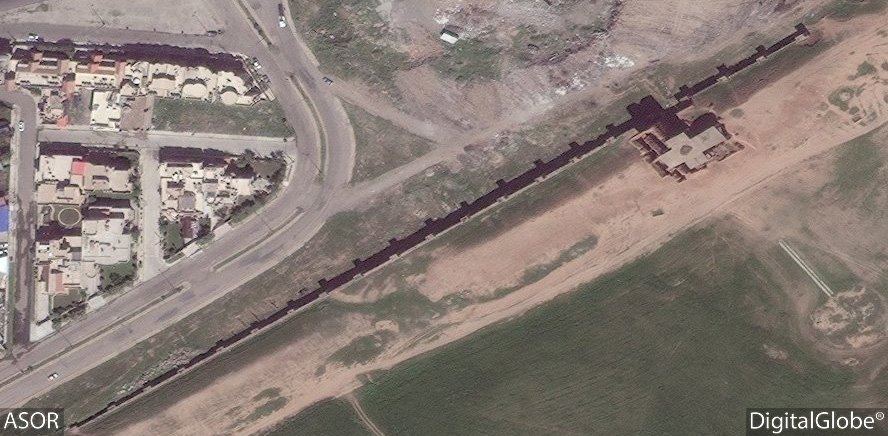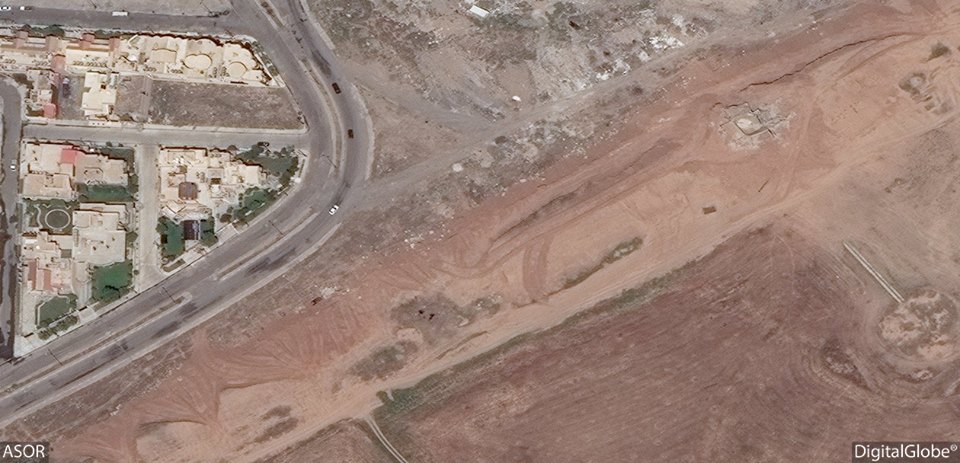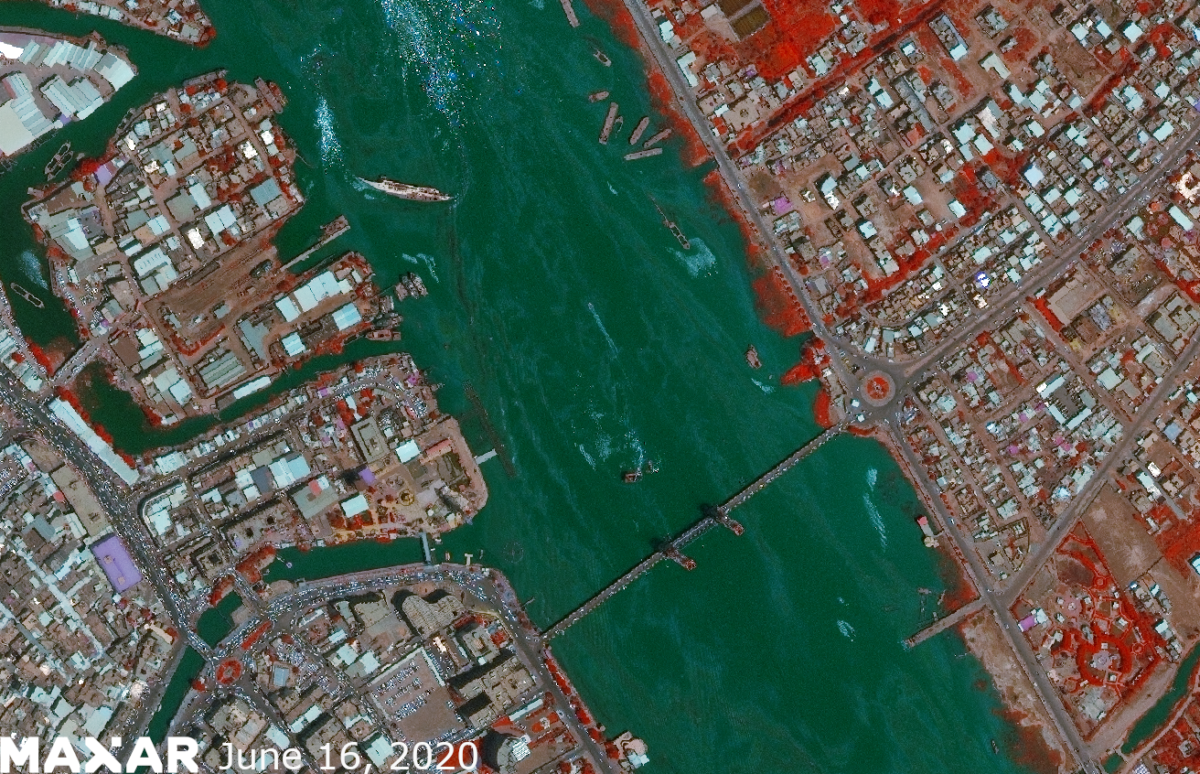Iraqi Digital Investigation Team Confirms ISIS Destruction of Gate in Nineveh
An independent investigation by the Iraqi Digital Investigation Team (IDIT) of the Berlin based organisation Media in Cooperation and Transition (MICT) has added evidence to support the claim that ISIS soldiers destroyed the Gate of Nineveh, a major historical site outside the ISIS-occupied city of Mosul, in April this year. It was the second destruction of an ancient gate in the city of Nineveh in weeks: the Mesqa Gate in Nineveh was destroyed earlier this year.
Nineveh is considered the last capital of the Assyrian Empire. It fell in 612BC but several archaeological sites were unearthed during the British Empire’s occupation of Iraq in the 18th and 19th Century.
IDI Team used a number of sources to confirm the time, method and manner of the destruction, including; witness testimonies, video evidence posted on Facebook, ISIS photos documenting the incident, as well as several geolocation verification techniques to confirm the validity of the sources.
Local media was unable to confirm that the Gate of Nineveh, known locally as Adad, was bulldozed by ISIS. This investigation, however, unearthed multiple pieces of supporting evidence to support the claim. A video posted on Facebook on April 13, 2016 by a group that goes by the name of Mosul Rebels captures the destruction of the gate on a mobile phone.
Using reverse image searching technique, the IDI Team were able to verify that the video was not posted before or after April 13. The video shows the gate being destroyed from the rear, confirming the manner of the desecration of cultural heritage, while geolocating what UNESCO described as “a war crime against the people of Iraq, whose heritage is a symbol and medium of identity, history and memory.”
An image from a video filmed on April 13 by an armed group fighting ISIS shows the entry point of ISIS vehicles, in the process destroying the Gate of Nineveh.
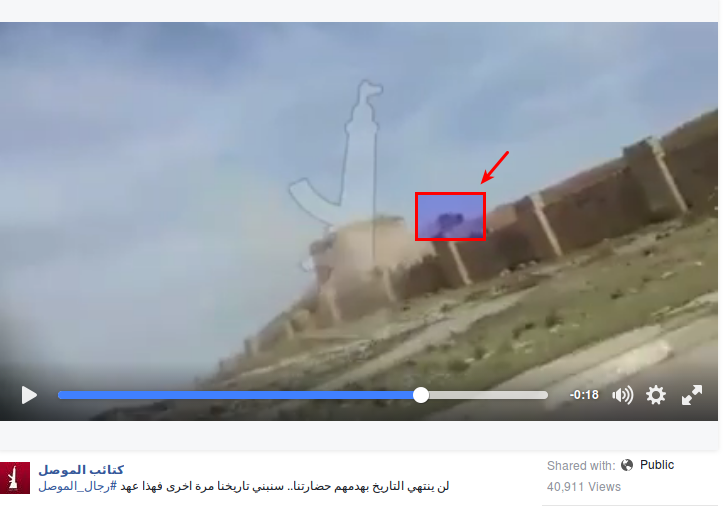
The original video was deleted from the original source. It has been preserved by the IDI Team and published on Bellingcat’s YouTube’s channel.
Using Google Earth to geolocate the above video, the IDI Team was able to confirm that the location from which the video was filmed was indeed a road behind the Nineveh Gate. The soil road [In green] and landscape features confirm it is the road to the gate (see image below).

An image dated April 1 posted on ASOR Cultural Heritage Initiatives, 2016, twelve days before the act of cultural sabotage, shows the wall and the gate still intact.
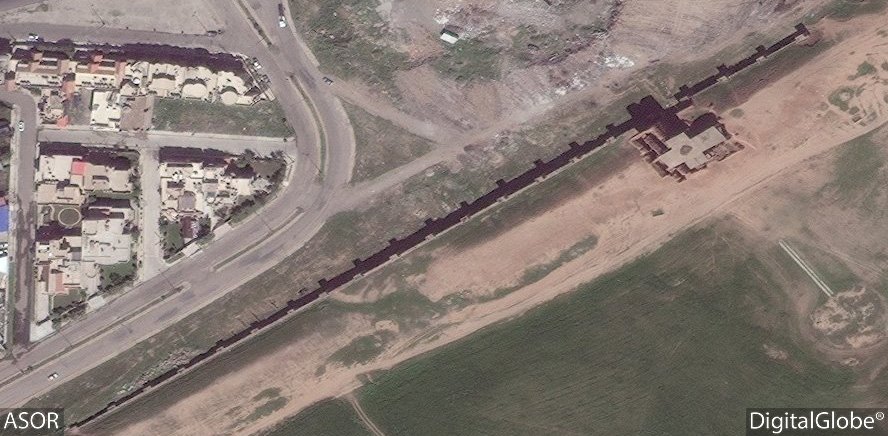
A screenshot from the video purporting to show the destruction of the Gate of Nineveh by ISIS forces confirms it is indeed the road leading to the rear side of the Assyrian monument.
Witness testimony also confirms the point of entry of ISIS vehicles. A witness from the Nergal neighborhood, who for security reasons preferred not to be named, confirmed that he saw ISIS trucks from the Mosul Municipality destroying Adad gate and the stone wall on April 13 2016. The witness’ account adds to the evidence that ISIS-owned vehicles entered from the bridge behind the gate, as shown in the images seen in the video. Several images sourced on ISIS-affiliated social media sites confirm the destruction, the date and the point of entry. An image sourced on an ISIS-affiliated social media site shows a bulldozer destroying the Gate of Nineveh from the rear side.


Images sourced from Terraserver in late May (05-21-2016) and early July (07-18-2016) also confirm that the gate was destroyed.
Another satellite image of Adad gate was published on the facebook channel of ASOR cultural heritage initiatives shows the scale of destruction.
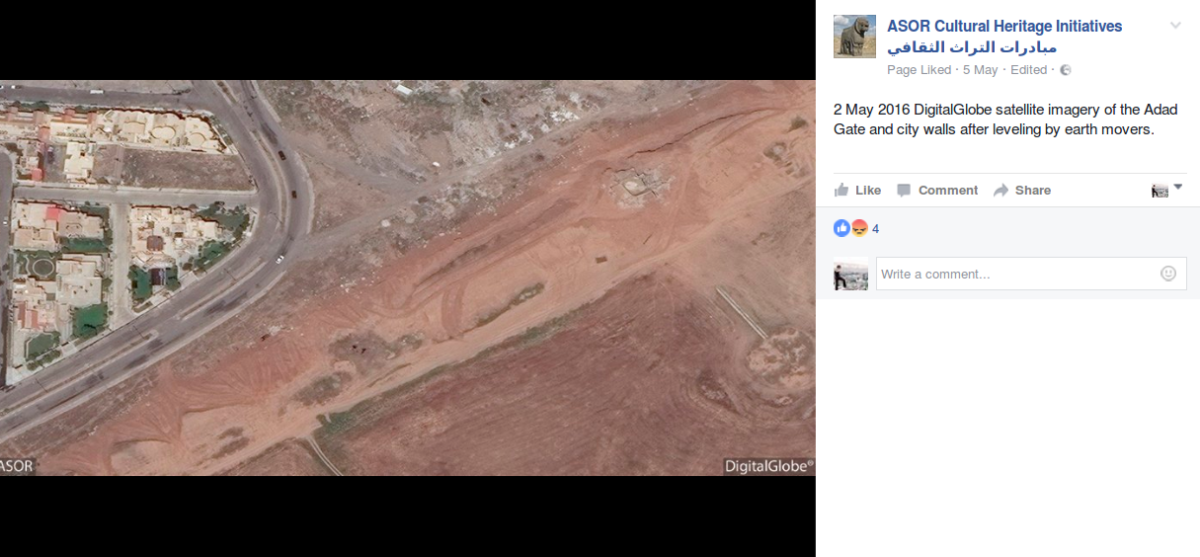
Director General of UNESCO Irina Bokova denounced the act in a press statement in late April. “I condemn the destruction of the gates of Mesqa and Adad, which are new crimes in a long list of attacks against the cultural heritage of Iraq, after the destruction of the winged bull of the Nergal gate, and the destruction at the Mosul Museum in 2015”.
